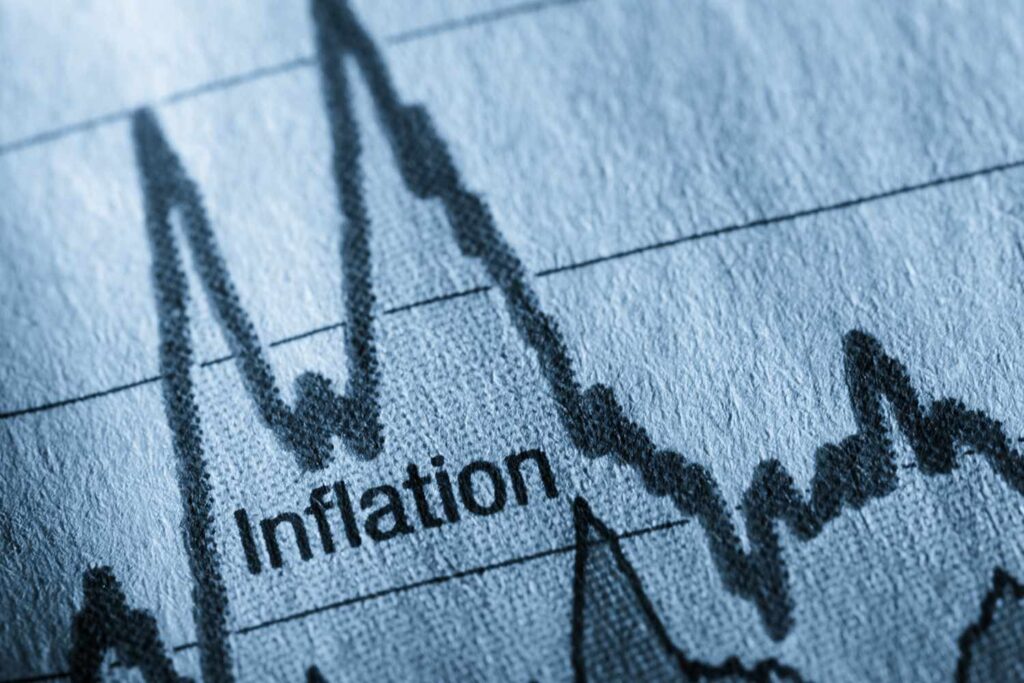
In Inflation Trends the past few years, inflation has emerged as a significant concern for both consumers and policymakers in the United States. As prices for goods and services have surged, understanding the dynamics of inflation has become increasingly critical. Inflation, defined as the rate at which the general level of prices for goods and services rises, erodes purchasing power and affects the overall economic health of a nation. The U.S. economy is currently experiencing a complex interplay of factors contributing to inflation, from supply chain disruptions to shifts in consumer demand.
The causes of inflation are multifaceted, often rooted in a combination of demand-pull and cost-push factors. Demand-pull inflation occurs when consumer demand for goods and services exceeds supply, leading to price increases. Conversely, cost-push inflation arises when the costs of production increase, forcing businesses to pass on those costs to consumers. The interplay of these factors has created a unique inflationary environment that requires careful analysis and strategic responses from consumers, businesses, and policymakers alike.
As we explore the current inflation trends in the U.S., we will delve into the underlying causes, the impact on various sectors of the economy, and potential strategies for mitigating the effects of inflation on consumers and businesses.
Inflation Trends Understanding the Causes of Inflation
Inflation is not a new phenomenon; it has been a recurring aspect of economic cycles for decades. However, the recent surge in inflation has raised questions about its causes and sustainability. One of the primary drivers of inflation in the current economic climate is the significant increase in consumer demand following the easing of pandemic-related restrictions. As consumers returned to the market, their pent-up demand for goods and services led to a surge in spending. This sudden spike in demand has placed immense pressure on supply chains, which have struggled to keep pace, leading to shortages and, subsequently, higher prices. Inflation Trends
Another critical factor contributing to inflation is the ongoing disruptions in global supply chains. The COVID-19 pandemic exposed vulnerabilities in the global supply chain, causing delays and shortages of essential goods. For instance, semiconductor shortages have impacted various industries, including automotive and electronics, resulting in higher prices for consumers. Additionally, logistical challenges, such as shipping delays and increased freight costs, have further exacerbated supply chain issues, contributing to the overall rise in prices.
Cost-push factors have also played a significant role in driving inflation. The rising costs of raw materials, energy, and labor have forced businesses to increase their prices to maintain profit margins. The recent surge in oil prices, driven by geopolitical tensions and production cuts, has had a cascading effect on transportation and manufacturing costs, leading to higher prices for consumers. Furthermore, labor shortages in certain sectors have driven wages higher, contributing to cost-push inflation. Inflation Trends
Impact of Inflation on Different Sectors
Inflation has far-reaching implications for various sectors of the economy, each facing unique challenges and adjustments. In the consumer goods sector, rising prices have led to shifts in consumer behavior. As prices increase, consumers may prioritize essential goods over discretionary spending, affecting businesses reliant on non-essential purchases. Retailers are adapting by offering promotions and discounts to attract customers while navigating the challenges of higher input costs. Inflation Trends
The housing market has also felt the impact of inflation. As mortgage rates rise in response to inflationary pressures, potential homebuyers may find it more challenging to afford homes, leading to a slowdown in the housing market. Rising construction costs, driven by increased prices for materials and labor, have also contributed to higher home prices, further exacerbating affordability issues.
In the financial sector, inflation poses challenges for investment strategies. Rising inflation often leads to increased interest rates as the Federal Reserve aims to control price increases. Higher interest rates can impact borrowing costs for consumers and businesses, leading to reduced spending and investment. Investors may also seek to adjust their portfolios in response to inflation, favoring assets that traditionally perform well in inflationary environments, such as real estate and commodities.
Furthermore, the agricultural sector has faced inflationary pressures as input costs, including fertilizers and fuel, have surged. Farmers may pass these increased costs onto consumers, leading to higher food prices. Additionally, unpredictable weather patterns and supply chain disruptions can further complicate the agricultural landscape, creating volatility in food prices.
Mitigating the Effects of Inflation
As inflation continues to impact the U.S. economy, both consumers and businesses must adopt strategies to mitigate its effects. For consumers, budgeting becomes increasingly crucial in an inflationary environment. Monitoring spending habits and prioritizing essential expenses can help individuals manage their finances effectively. Additionally, exploring alternative purchasing options, such as buying in bulk or utilizing discount retailers, can provide relief from rising prices.
Businesses must also adapt to the changing economic landscape by reevaluating pricing strategies. Transparent communication with customers regarding price increases can help maintain trust and loyalty. Furthermore, investing in supply chain resilience and exploring alternative sourcing options can mitigate the impact of supply chain disruptions on production costs.
Policymakers play a vital role in addressing inflation concerns through monetary policy. The Federal Reserve may implement interest rate hikes to curb inflationary pressures, but such measures must be carefully calibrated to avoid stifling economic growth. Striking a balance between controlling inflation and supporting economic recovery is crucial for fostering a stable economic environment.
Conclusion
Inflation trends in the U.S. present both challenges and opportunities for consumers, businesses, and policymakers. Understanding the underlying causes of inflation, its impact on various sectors, and strategies for mitigation is essential for navigating the current economic landscape. While inflation poses difficulties, proactive measures can help individuals and businesses adapt to the changing environment.
As the U.S. economy continues to recover from the pandemic, monitoring inflation trends and adjusting strategies accordingly will be vital for sustaining economic growth. By fostering collaboration between consumers, businesses, and policymakers, the nation can work towards mitigating the effects of inflation while promoting a resilient and thriving economy.
